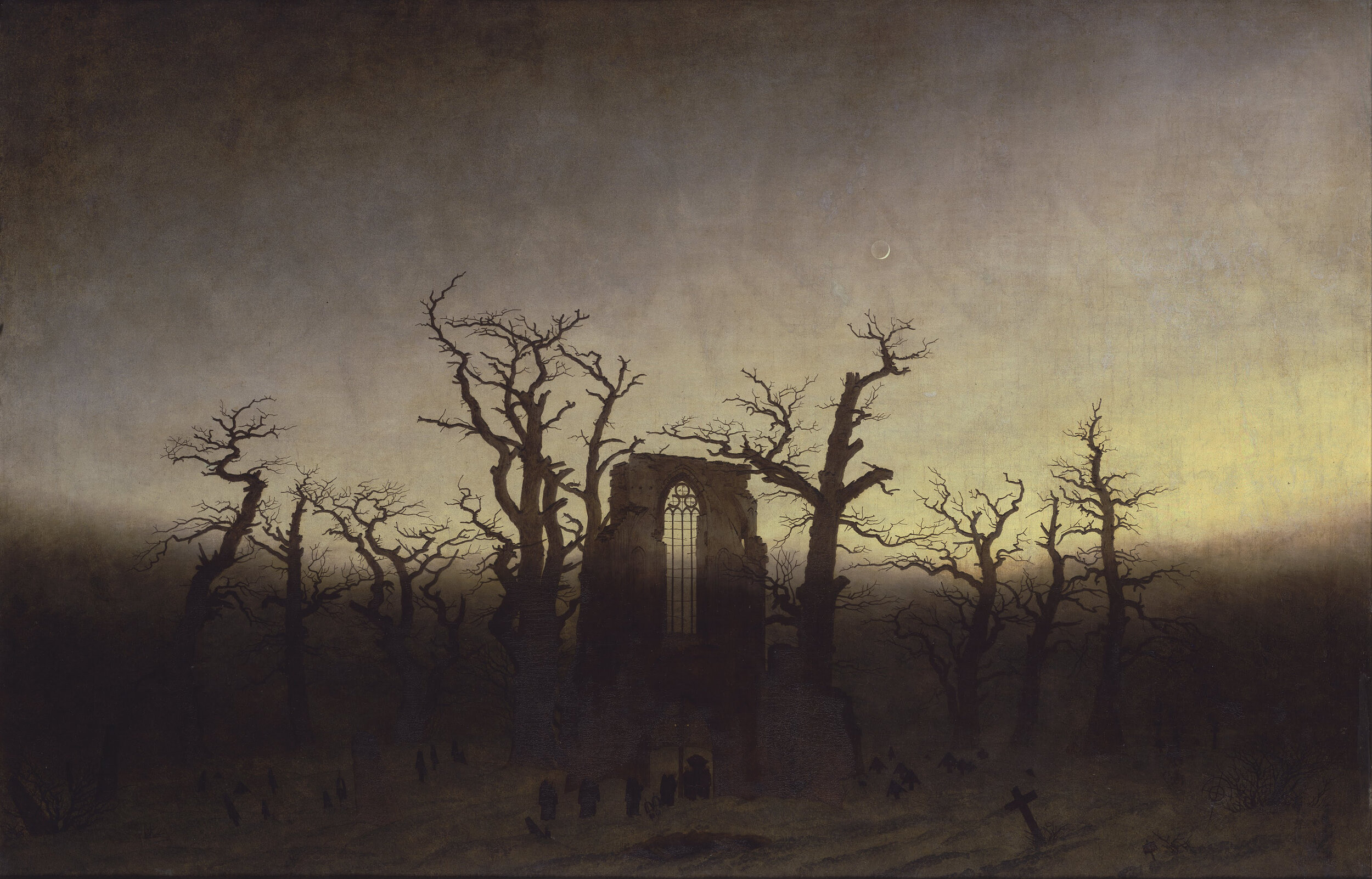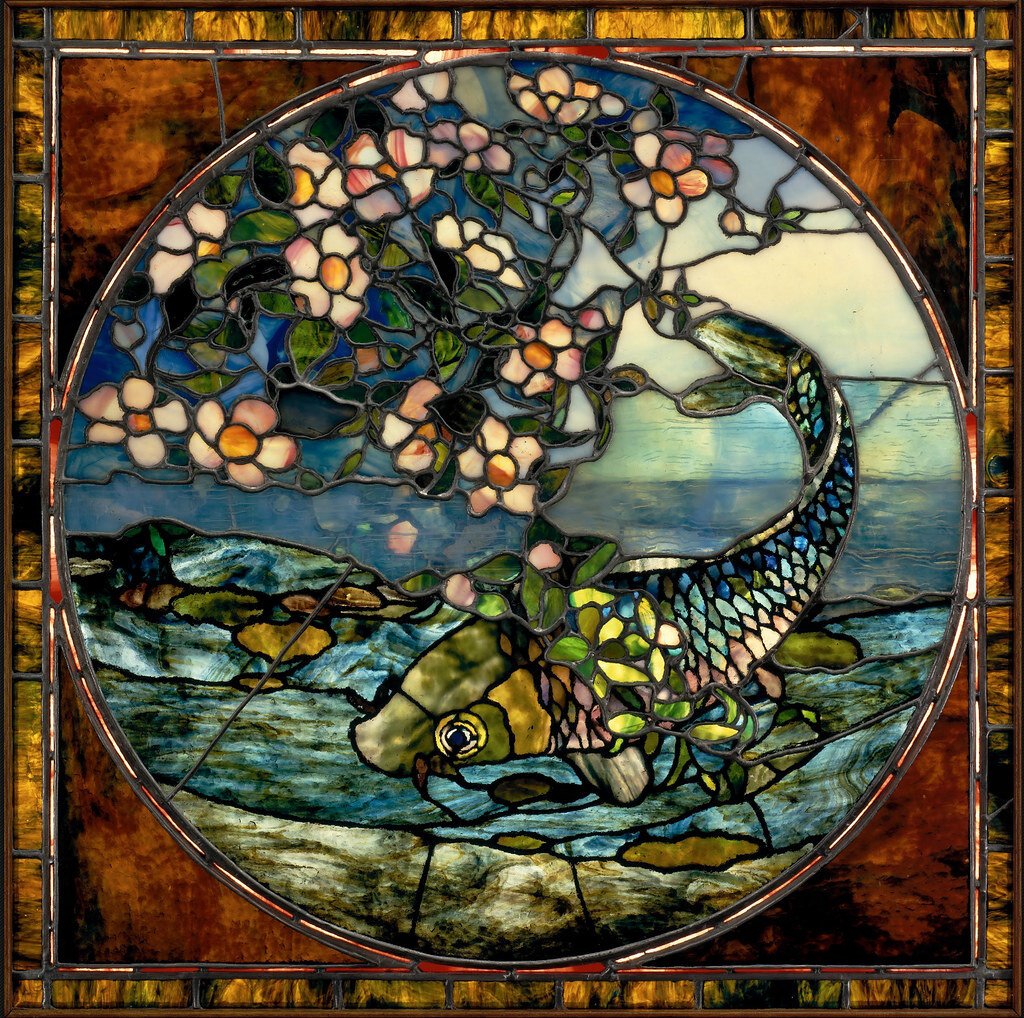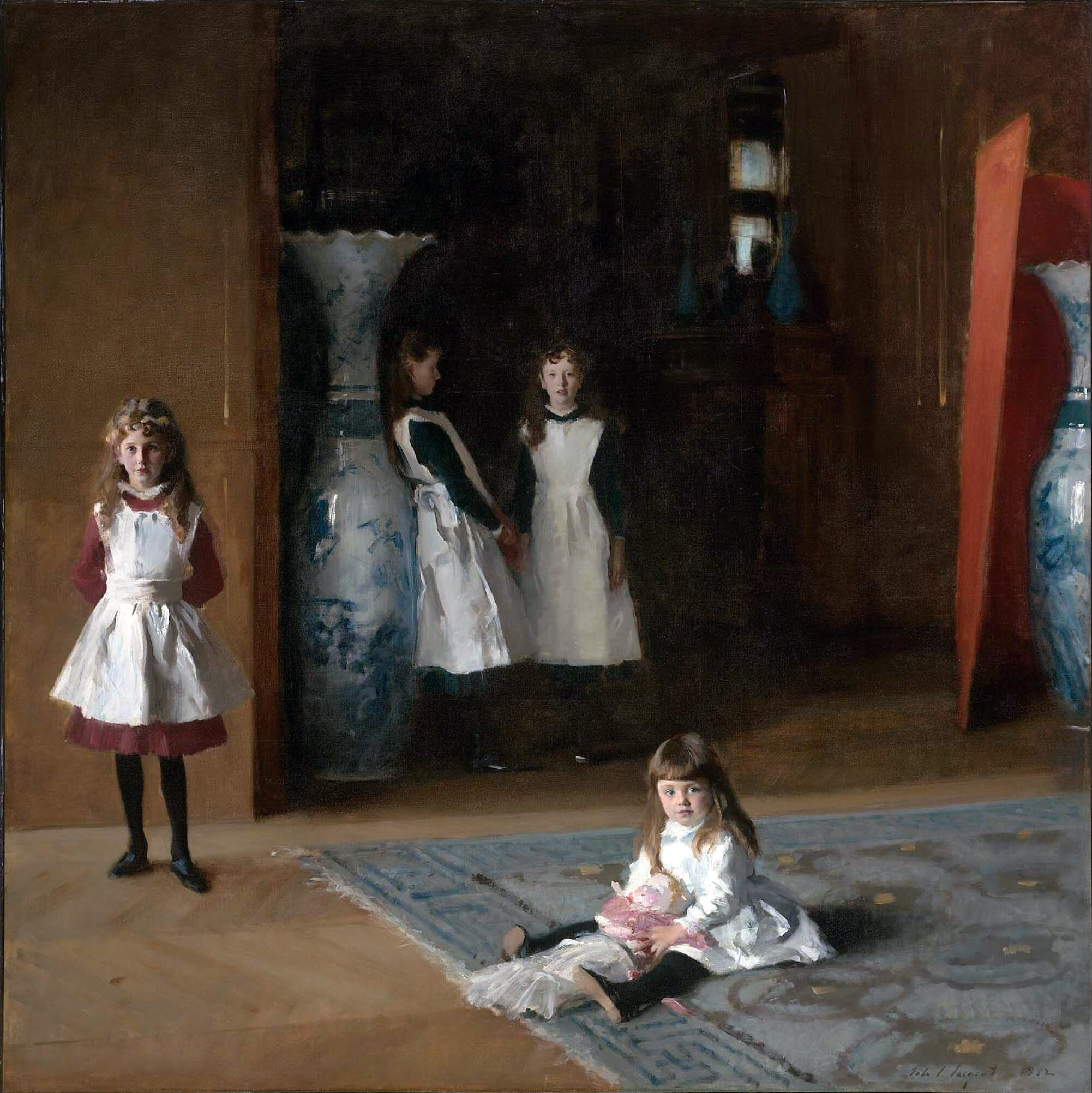Portrait of a Pig, 1970 by James Wyeth, The Brandywine River Museum.
Yet another artist in the Wyeth family. James is well known for his portraits although he creates paintings from many different genres.
Your Custom Text Here

Portrait of a Pig, 1970 by James Wyeth, The Brandywine River Museum.
Yet another artist in the Wyeth family. James is well known for his portraits although he creates paintings from many different genres.

The Abbey in the Oakwood, 1809-10 by Casper David Friedrich, Schloss Charlottenburg, Berlin.
Friedrich's remarkable landscapes in the Romantic style influenced the great landscape artists of the Hudson River School and the Rocky Mountain School.This work was done in sepia.

Owl Wallpaper, c. 1898 by Charles F.A. Voysey.
Voysey began designing wallpaper and fabric and later moved on to architecture, as well. His simple style appealed to tastes that were becoming increasingly influenced by the British Arts & Crafts movement.

Daybreak by Maxfield Parrish, 1922, Private Collection.
Parrish's father was an artist and he was encouraged by his family to pursue a career as an artist. He had a good deal of success as an artist, but also as illustrator who added life and color to many books. This is one of his most famous pieces and is still available as a print today.

Archangel Gabriel, 13th Century AD, Notre Dame Cathedral, Reims,France.
Notre Dame at Reims is the first example of the High Gothic style of architecture. It is highly decorated with carving, sculpture and stained glass. It sustained a great deal of damage after the French Revolution and during WWII.

Archangel Gabriel with Mary

Kitty and Girl on Beach, c. 1960's by Margaret Keane, glued to cardboard in basements.
Popular in the 1960's big eyed puppies, kitties and children could be found tacked to bedroom walls and in this case on puzzles from Woolworth. These works were painted by Margaret Keane whose husband originally claimed to be the artist. It eventually came down to a “paint off” between the two. The story is captured in the movie Big Eyes.

The Hallucinogenic Toreador, 1969-70 by Salvador Dali, the Salvador Dali Museum, St. Petersburg, FL.
Dali conceived this work in an art supply store. It is rich with color and imagery. It features the famous ancient statue of Venus now housed in the Louvre.

Salisbury Cathedral From the Bishop’s Grounds 1826 by John Constable, The Frick Collection.
This version also includes a figure of the Bishop pointing out the cathedral's spire and the young lady with the parasol is assumed to be one of his daughters.

Salisbury Cathedral from The River, 1820 by John Constable, National Gallery, London.
Constable painted this work for his friend the Dr. John Fisher, the Bishop of Salisbury and his nephew Archdeacon John Fisher after the Archdeacon was granted the house in the foreground for life.

Garden Landscape and Fountain, 1905-1915 by Louis Comfort Tiffany, The Metropolitan Museum of Art.
Tiffany's father began the jewelry business that has become on of the world's most famous and Louis Comfort Tiffany could have settled into the family business, but instead he chose to create a legacy of his own and some of the most widely collected and prized art glass in the world.

The Fish, 1890 by John La Farge, Museum of Fine Arts, Boston.
La Farge worked in stained glass creating many famous projects in public buildings, especially churches. He was also a painter in oil and watercolors, and a writer.

Blue and White, 1896 by Louise Jopling,
Lady Lever Art Gallery, Port Sunlight, England.
During the Victorian period it became quite fashionable to collect blue and white porcelain from China, The Netherlands and eventually from England when the potteries there began to produce it. People would have entire rooms devoted to displaying their large collections.

The Daughters of Edward Darley Boit, 1882 by John Singer Sargent, MFA Boston.
Sargent's portraits of children are among his most expressive. It must have been nice for him to work with subjects who would have probably been less vain than the adults (although I am sure a few of them were looking over his shoulder).


Andy Mouse, 1985 by Keith Haring © Keith Haring Foundation
Haring was very popular from the mid 1980's on. He was a real presence in NYC first through the drawings he used to do in chalk on the black matte surfaces of empty subway advertising panels. These drawings brought him recognition and gallery shows. He and Jean-Michel Basquiat, his friend have had a return to popularity recently.
This work in a portrait of Andy Warhol.

The Wilton Diptych, c. 1394 for King Richard the II, artist unknown,National Gallery, London.
One of my favorite of the Madonna and Child images. The blues are so vivid especially against the gold. It is the size of a regular book when closed. Diptych refers to the two parts of the painting.

Houses of Parliament, London, 1905 by Claude Monet, Musee Marmottan, Paris.
Another of Monet's views of Parliament. His goal was to paint the same thing in different light, which in turn would make a different impression, much darker, yet recognizable.

Houses of Parliament, London, Sun Breaking Through the Fog, 1904 by Claude Monet, Musee d'Orsay,Paris.
Monet, like Turner recorded the London Parliament buildings but his was a study of the same building at different times of the day.

“Dark Prison (Cacrere Oscura),” c.1790 by Joseph Mallord William Turner, The Metropolitan Museum of Art.
Turner is the most famous and prolific British painter of the 19th Century. His watercolors and oils record the buildings an events of his world. He also traveled throughout Europe and the British isles where he recorded what he saw. The work was inspired by the Italian artist Piranesi.

An Image from the Hall of Bulls, the Caves at Lascaux, Dordogne,France.
The caves at Lascaux contain some of the earliest known art work to be created by man. They are dated to between 13,000 to 15,000 BC and were discovered in 1940. They were open but carbon dioxide from visitors was damaging the paintings so they were closed in 1963 to preserve them.

Senecio, by Paul Klee, 1922